- Clone
- HEK/1/85a (See other available formats)
- Regulatory Status
- RUO
- Other Names
- CCR5, C-C chemokine receptor type 5, HIV-1 fusion co-receptor
- Isotype
- Rat IgG2a, κ
- Ave. Rating
- Submit a Review
- Product Citations
- publications
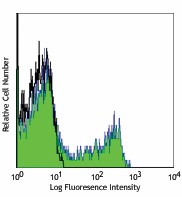
-

Human peripheral blood lymphocytes were stained with CD195 (clone HEK/1/85a) Alexa Fluor® 700 (filled green histogram), or rat IgG2a, κ Alexa Fluor® 700 (open black histogram).
CD195, also known as CCR5, is a 45 kD G protein-coupled seven transmembrane CC-chemokine receptor. It binds to MIP-1α, MIP-1β, and RANTES and is expressed on a subset of T cells and monocytes. CD195 mediates an intracellular signal thought to induce cell differentiation and proliferation. CCR5 has also been shown to act as a co-receptor for R5 HIV-1 cell entry; modification of CCR5 by sulfation contributes to the efficiency of HIV-1 entry. Recent studies have shown CCR5 to play a role in a variety of other human diseases, ranging from infectious and inflammatory diseases to cancer.
Product DetailsProduct Details
- Verified Reactivity
- Human
- Antibody Type
- Monoclonal
- Host Species
- Rat
- Immunogen
- CHO cells transfected with human CCR5
- Formulation
- Phosphate-buffered solution, pH 7.2, containing 0.09% sodium azide.
- Preparation
- The antibody was purified by affinity chromatography and conjugated with Alexa Fluor® 700 under optimal conditions.
- Concentration
- 0.5 mg/ml
- Storage & Handling
- The antibody solution should be stored undiluted between 2°C and 8°C, and protected from prolonged exposure to light. Do not freeze.
- Application
-
FC - Quality tested
- Recommended Usage
-
Each lot of this antibody is quality control tested by immunofluorescent staining with flow cytometric analysis. The suggested use of this reagent is ≤2.0 µg per million cells in 100 µl volume. It is highly recommended that the reagent be titrated for optimal performance for each application.
* Alexa Fluor® 700 has a maximum emission of 719 nm when it is excited at 633 nm / 635 nm. Prior to using Alexa Fluor® 700 conjugate for flow cytometric analysis, please verify your flow cytometer's capability of exciting and detecting the fluorochrome.
Alexa Fluor® and Pacific Blue™ are trademarks of Life Technologies Corporation.
View full statement regarding label licenses - Excitation Laser
-
Red Laser (633 nm)
- Application Notes
-
Additional reported applications (for the relevant formats) include: immunofluorescence microscopy1
Clone HEK/1/85a and clone HEK/1/85a/7a are the same. -
Application References
(PubMed link indicates BioLegend citation) - Product Citations
-
- RRID
-
AB_528761 (BioLegend Cat. No. 313713)
Antigen Details
- Structure
- G-coupled receptor family 1, membrane protein, 45 kD
- Distribution
-
Subset of T cells, monocytes
- Function
- Binds C-C chemokines and transduces an intracellular signal thought to result in proliferation and differentiation. Acts as a co-receptor with CD4 for HIV-1
- Ligand/Receptor
- MIP-1α, MIP-1ß, RANTES
- Cell Type
- Dendritic cells, Monocytes, T cells
- Biology Area
- Immunology
- Molecular Family
- CD Molecules, Cytokine/Chemokine Receptors, GPCR
- Antigen References
-
1. Samson M, et al. 1996. Biochemistry 35:3362.
2. Raport CJ, et al. 1996. J. Biol. Chem. 271:17161.
3. Combadiere C, et al. 1996. J. Leukoc. Biol. 60:147.
4. Deng H, et al. 1996. Nature 381:661.
5. Lai J, et al. 2003. CVI. 10:1123.
6. Mañes S, et al. 2003. J. Exp. Med. 198:1381.
7. Vaday GG, et al. 2006. Prostate 66:124. - Gene ID
- 1234 View all products for this Gene ID
- UniProt
- View information about CD195 on UniProt.org
Related FAQs
- Does staining at room temperature or even at 37°C help for checking chemokine receptors expression?
-
Due to continuous recycling of many chemokine receptors, it may be worthwhile to consider staining at room temperature or at 37°C if the staining at lower temperature (which can potentially reduce receptor turnover) is not optimal.
Other Formats
View All CD195 Reagents Request Custom Conjugation| Description | Clone | Applications |
|---|---|---|
| FITC anti-human CD195 (CCR5) | HEK/1/85a | FC |
| PE anti-human CD195 (CCR5) | HEK/1/85a | FC |
| Alexa Fluor® 647 anti-human CD195 (CCR5) | HEK/1/85a | FC |
| Alexa Fluor® 700 anti-human CD195 (CCR5) | HEK/1/85a | FC |
| PerCP/Cyanine5.5 anti-human CD195 (CCR5) | HEK/1/85a | FC |
| Pacific Blue™ anti-human CD195 (CCR5) | HEK/1/85a | FC |
| Purified anti-human CD195 (CCR5) | HEK/1/85a | FC |
| Spark Blue™ 550 anti-human CD195 (CCR5) (Flexi-Fluor™) | HEK/1/85a | FC |
| Spark Red™ 718 anti-human CD195 (CCR5) (Flexi-Fluor™) | HEK/1/85a | FC |
Customers Also Purchased
Compare Data Across All Formats
This data display is provided for general comparisons between formats.
Your actual data may vary due to variations in samples, target cells, instruments and their settings, staining conditions, and other factors.
If you need assistance with selecting the best format contact our expert technical support team.
-
FITC anti-human CD195 (CCR5)
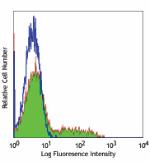
Human peripheral blood lymphocytes were stained with CD195 (... -
PE anti-human CD195 (CCR5)
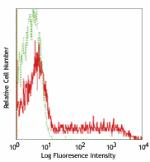
Human peripheral blood lymphocytes were stained with CD195 (... -
Alexa Fluor® 647 anti-human CD195 (CCR5)
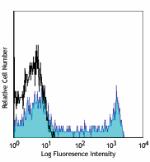
Human peripheral blood lymphocytes were stained with CD195 (... -
Alexa Fluor® 700 anti-human CD195 (CCR5)
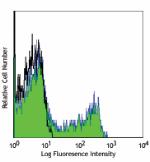
Human peripheral blood lymphocytes were stained with CD195 (... -
PerCP/Cyanine5.5 anti-human CD195 (CCR5)
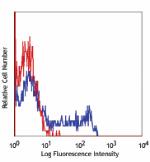
Human peripheral blood lymphocytes were stained with CD195 (... -
Pacific Blue™ anti-human CD195 (CCR5)
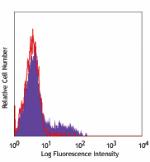
Human peripheral blood lymphocytes were stained with CD195 (... -
Purified anti-human CD195 (CCR5)
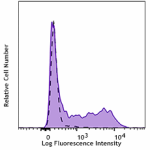
Human peripheral blood lymphocytes stained with anti-human C... -
Spark Blue™ 550 anti-human CD195 (CCR5) (Flexi-Fluor™)
-
Spark Red™ 718 anti-human CD195 (CCR5) (Flexi-Fluor™)










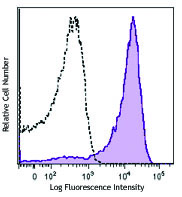
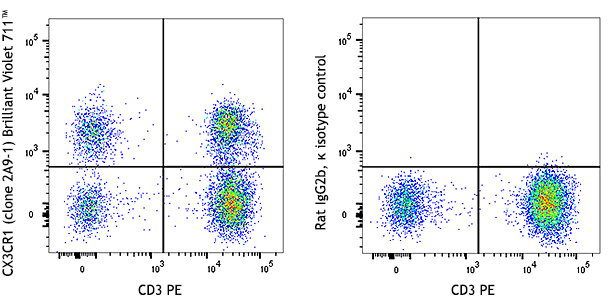
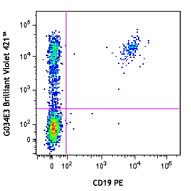
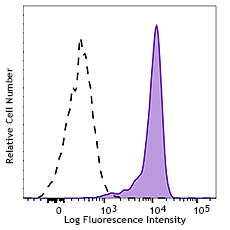



Follow Us